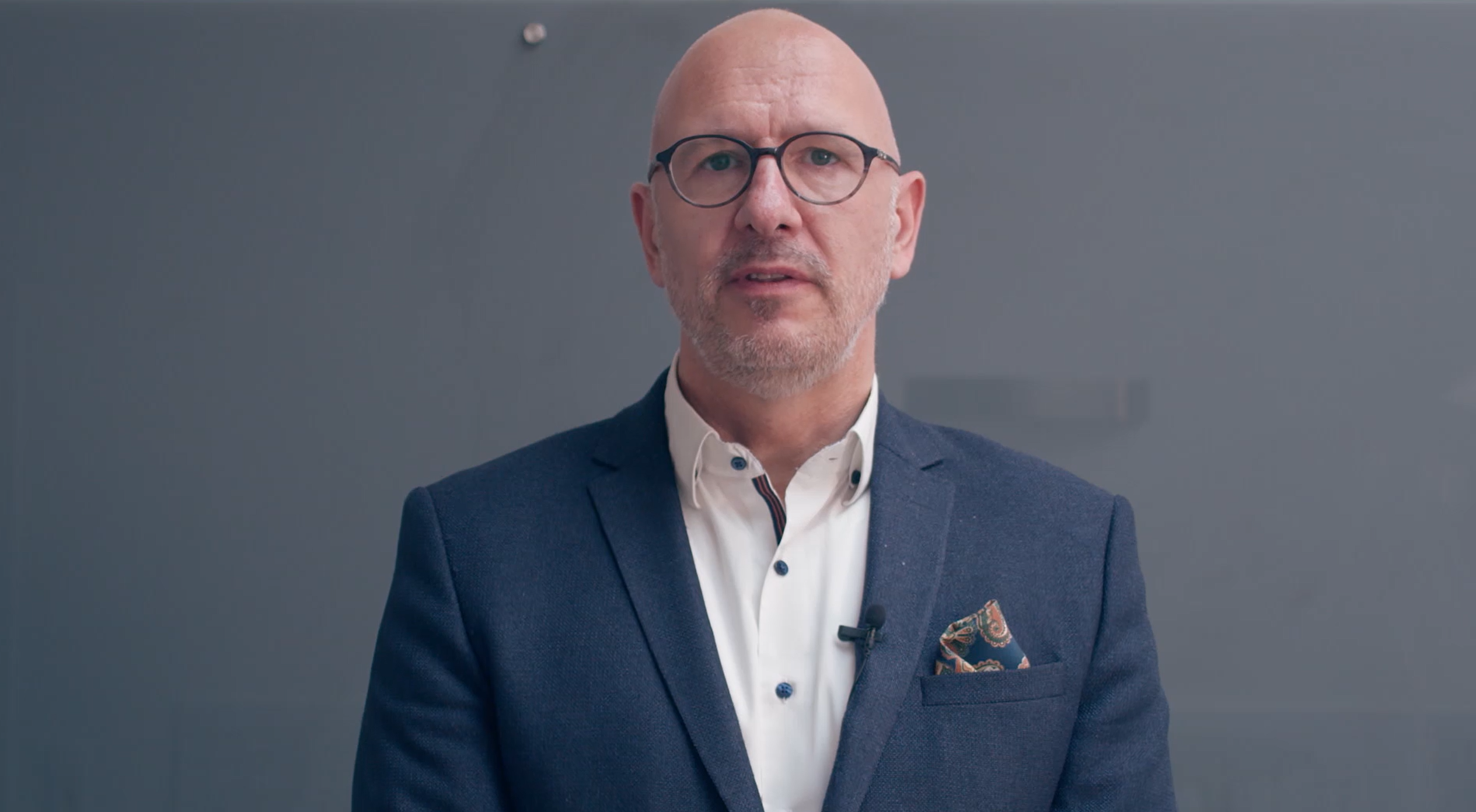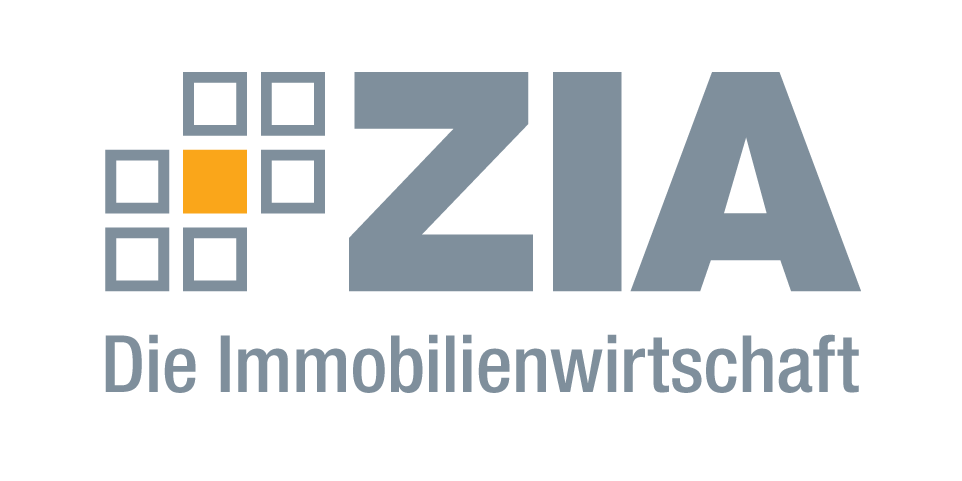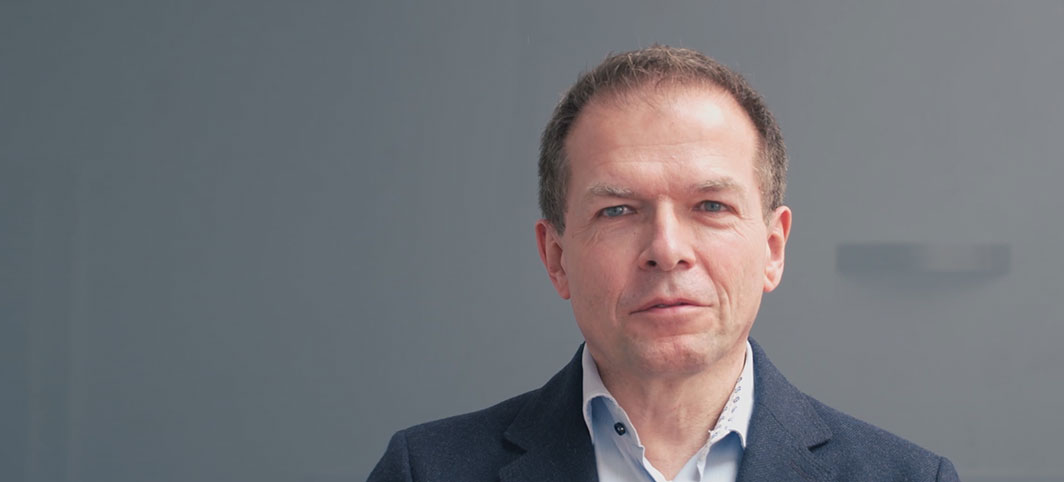TEAM GROWTH AT THE METHOD PROVIDER SEMODU
Team growth at the method provider SEMODUSEMODU AG strengthens competencies with Head of Investor Relations
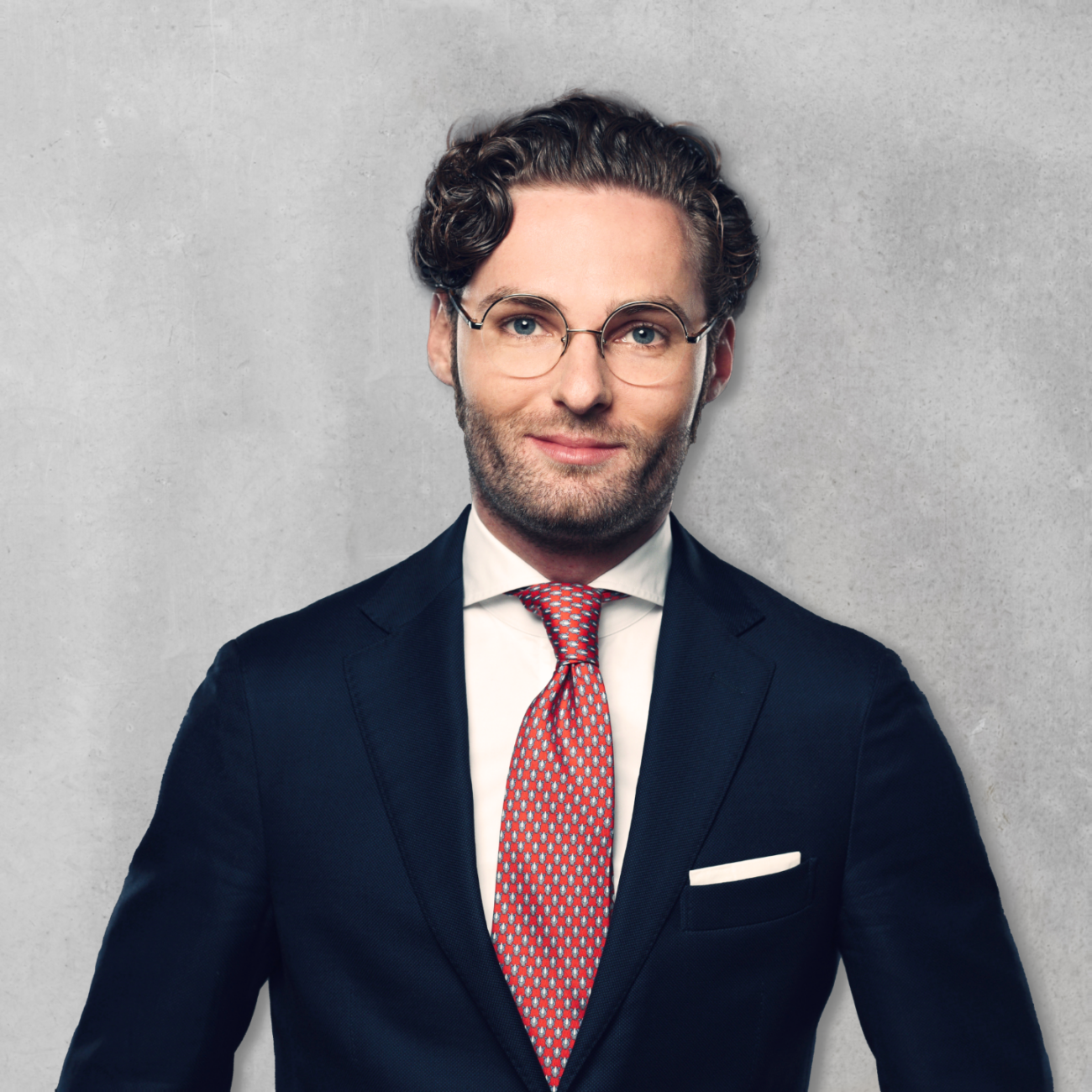
Benedict Heidbüchel
(Pic: Semodu)
Stuttgart/Berlin, March XX, 2022 – SEMODU AG is bringing Benedict Heidbüchel (28) into the team as Head of Investor Relations and Director of its sister company WANDWALL PLC. The economist has in-depth experience in M&A transaction consulting and industry expertise in the fields of renewable energies, transport & logistics, automotive, rail, industrial automation and SaaS.
“I am very much looking forward to my exciting role in an innovative company that is driving forward the modernization of the real estate industry with sustainable, forward-looking energy and digital concepts,” says Heidbüchel, who is moving from Proventis Partners GmbH to SEMODU. As an Investment Banking Associate, he was responsible for financial models, market research and conducting transactions for industrial, retail and healthcare companies. Previously, he was a Senior Consultant at PFK Industrie- und Verkehrstreuhand GmbH, where he accompanied DAX companies in the healthcare, mobility and energy sectors in the context of carve-outs and spin-offs.
Heidbüchel holds a Master of Laws (LL.M.) in M&A and has entrepreneurial experience as a start-up founder in the field of online solutions.
About SEMODU
Based on state-of-the-art software solutions and complex mathematical systems, SEMODU AG develops high-quality building modules as well as new methods for the control of buildings. Together with municipalities and partners from architecture, building technology, module production and the energy sector, SEMODU is thus driving the future of buildings and cities forward – affordable, CO2-neutral and at the same time modern and livable. With locations in Munich, Stuttgart, Frankfurt, Berlin and Mannheim, the company led by CEO Frank Talmon l’Armée is active nationwide and internationally, including projects in Baden-Württemberg, Berlin, Brandenburg, Hesse and North Rhine-Westphalia. For more information: www.semodu.de
Press
Alale Sarshar Fardecholot
public relations
Tel: +49 (0)711 99014 – 84
E-Mail: [email protected]
SHARE ARTICLE
REFIRE in discussion with: Frank Talmon l'Armée, CEO of SEMODU AG
The biggest challenges of the real estate industry
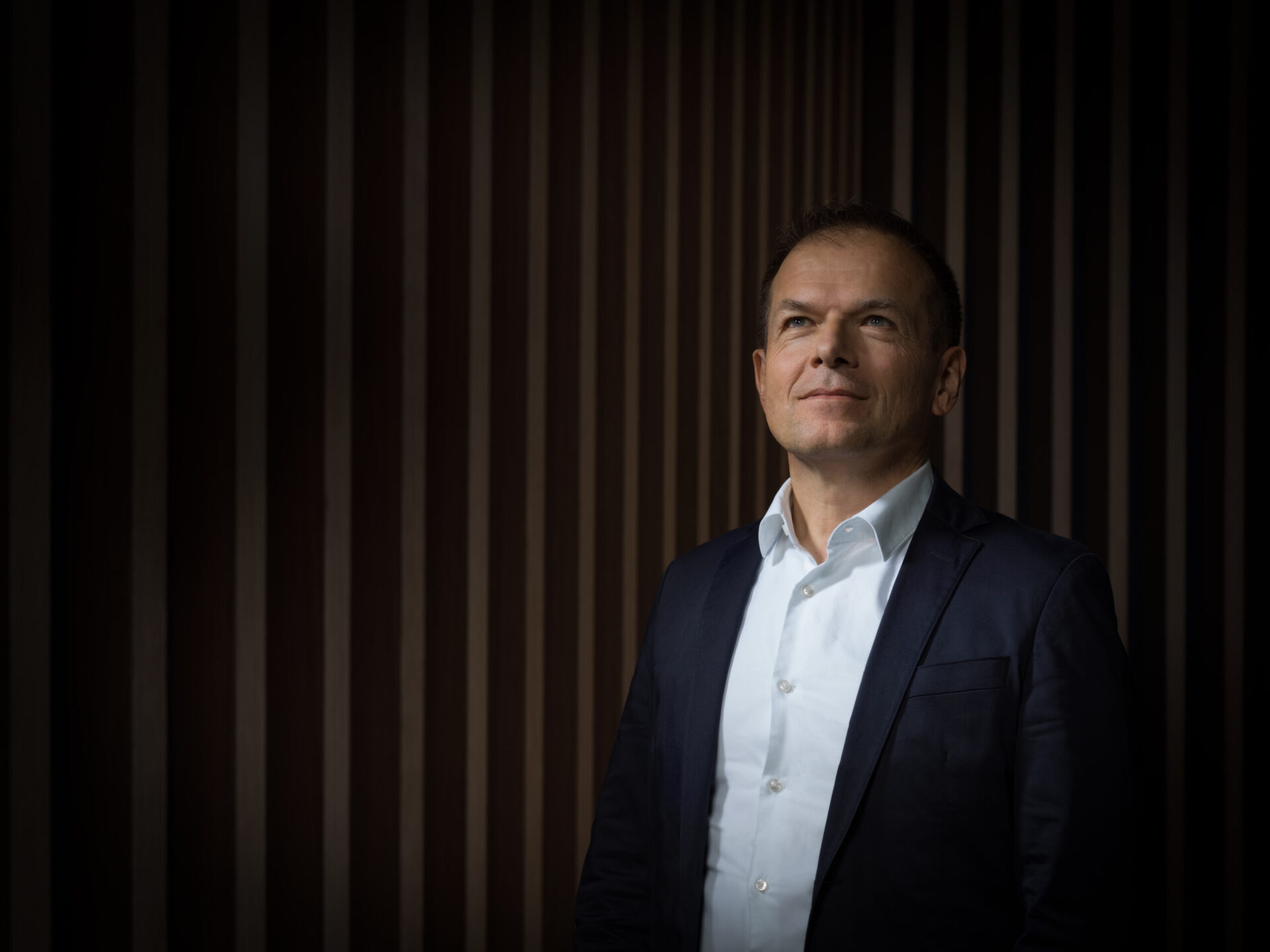
From
Frank Talmon l´Armée
CEO
of SEMODU AG
REFIRE: What is SEMODU and what do you do?
Frank Talmon l’Armée: We are the industry leader in modular construction but we have a number of different business lines. We focus on classic modular building and project development, then there are aspects relating to sustainability based on ESG criteria plus the range of topics in the field of digital transformation. Modular building is basically the prefabricated production of ready-to-use cellular rooms which are then assembled on the building site.
Yes, there’s a high level of prefabrication, but that’s the point. We have the method down to a T and we tend to treat every project on more-or-less the same mathematical basis. Irrespective of the project location, we can construct the same building as a number of predefined modules. Our energy concept is a critical factor here. Our aim is to operate carbon-neutral buildings. If possible, we can both heat and cool buildings using electricity alone.
What does SEMODU do that the others don’t?
The wide range of activities. I don’t know of any other company which develops its own projects based on serial and modular construction, which owns an energy company implementing carbon-neutral real estate solutions and which also participates in a company focussing on digital transformation.
What are the challenges facing the construction industry?
The biggest challenge is creating affordable housing. Particularly younger people and families – including my colleagues in Berlin – are finding it difficult to find reasonably priced apartments close to their place of work. A further sticking point is keeping up with and utilising new technologies. Just like what happened in the automotive industry, we need someone in the construction sector to lead the way towards digital transformation. These things always start with a phase of abject denial, but then lots of people will jump on the bandwagon because they need to position themselves behind the forerunners.
But I don’t think the sector will manage this shift on its own. It needs companies to bring disruptive technologies into the market. A further problem is the waste of resources and the high carbon footprint in the industry. We need a sea change towards a recycling-based cradle-to-cradle economy. And finally there’s the issue of productivity, which has been massively increased in other sectors – there’s a world of difference. It’s not so much a problem of the lengthy procedures for obtaining new building permits, but that does play a role. The fact is that as long as you don’t find an alternative means of production, there will be no rise in productivity. The construction industry is doing the same things it did 50 years ago – not much has changed. The building site still looks much the same, with the same machines and skills and manned by people who make long journeys to work every day. The same goes for planning processes. If I develop a new concept, new plans and new construction methods for every building, this involves new teams; a lot of time is wasted and there is no learning curve. Each and every building is practically a prototype.
How is Germany doing compared to other countries? Are we lagging behind?
There are basically two big problems in Germany. One is the different regulatory frameworks across the 16 states and the other is the DIN standards, which have hardly been updated. Anything that is not regulated by DIN guidelines is very difficult to turn into technical progress. If we look at our neighbours, France has far less in the way of regulations and the Netherlands is much more productive because of its proximity to the water, even despite difficult circumstances, because they are actually thinking about serial modular construction and are able to build houses quicker, more efficiently and less expensively.
So does SEMODU have solutions for these problems?
Absolutely. Modular construction makes it possible to radically shorten project and building phases, which significantly reduces the costs for staff and materials. But to leverage the best possible advantage out of this, we need mass production. Just like in the motor vehicle sector, a “permit” would not be for individual buildings as such but for the system modules, and these can then be assembled in different ways to create large numbers of houses. Again as with motor vehicles mass production by robots will take place on large production lines in factories instead of windy and rainswept building sites. This all serves to reduce costs and makes affordable housing possible. It also requires a massive innovation boost within the industry, which is still operating the same way it did 50 years ago.
What are SEMODU’s concepts in terms of sustainability?
There are four main points to consider here: reduce, reuse, relocate and recycle. Our modular concept optimises construction in terms of materials and also in terms of workforce and timing. An important issue is to construct buildings which can be used for different purposes, in case social requirements change over time. This is also an important issue in terms of relocate. If a residential neighbourhood undergoes changes, it is something of an advantage if the building can be disassembled at one place and reassembled somewhere else. This is particularly important in the case of kindergartens, offices and our design for a micro clinic the requirements of the building are basically the same, no matter what the location. The modules are constructed in accordance with the cradle-to-cradle principal to make materials easy to recycle.
What are SEMODU’s ideas for the fight against climate change?
We use wood modules wherever possible and also actively support reafforestation. We are able to achieve carbon neutrality or maybe even a positive CO2 balance. We also support the organisation “1% for the planet”, which has taken up a range of projects in the fight against climate change. As a sustainable company, we want to be a shining example for others to follow this route. We believe that even the smallest projects help to save our planet and all of mankind.
You said the construction sector is like it was 50 years ago – why is change so slow?
All technological advances and innovations are seen as a threat to traditional ways of doing business, although there have been many technical solutions to improve processes such as planning, organisation and even acquisition and sale. There are many individual initiatives under way but not enough to be able to speak of “digital transformation” as yet. We want to help drive this change so that technologies like the internet of things and artificial intelligence become the new state-of-the-art.
What is SEMODU doing to drive the digitalisation process?
We recently bought 360,000,000 shares in the company WANDWALL PLC, which had developed an alldigital building model into which blockchain and AI have been integrated. The company plans a second flotation of 200,000,000 shares targeted at wealthy private individuals in February of next year. These digital walls are a platform and at the same time a new interactive device to unify all functions, which were previously scattered amongst an immense number of different devices.
For example heating, security and lighting can be activated by touch, gestures, speech or apps. Digital walls can also change into wallpapers, art exhibitions and social media walls which are replacing the TV and family photo albums. Horizontal surfaces can be heated, magnetised and even serve as hobs by way of induction.
But that’s not all. On the one hand artificial intelligence means that we can utilise services such as digital assistance, translations, voice-recognition and security surveillance and on the other mechanical learning can analyse and recognise behaviour and prototypes to make living into a real experience. Depending on circumstances and mood, the solution can change the wall colour or play music. Likewise AI can also make suggestions, like YouTube. When I cook dinner, I can get recipe tips based on previous meals or a personal health regime.
Blockchain is usually discussed in connection with crypto currencies, so what use is it in the construction industry?
In terms of the market, it’s possible to transfer and sell properties in the form of tokens. But even at home it would be possible for me to sell services. Blockchain makes the transactions and the issue of tokens absolutely secure. So you don’t have to rely on mutual trust. It all goes much faster without the personal contact.
We are currently working on a white paper to develop a space concept for the implementation of smart contracts based on blockchain. This is particularly helpful if everything is handled online or if outsiders also have access. Blockchain speeds up processes and secures procedures without losing reliability and transparency.
SHARE ARTICLE
LIMITED CO2 EMISSIONS ALSO AFFECT BUILDING SECTOR
Digitalization and serial production for sustainable construction
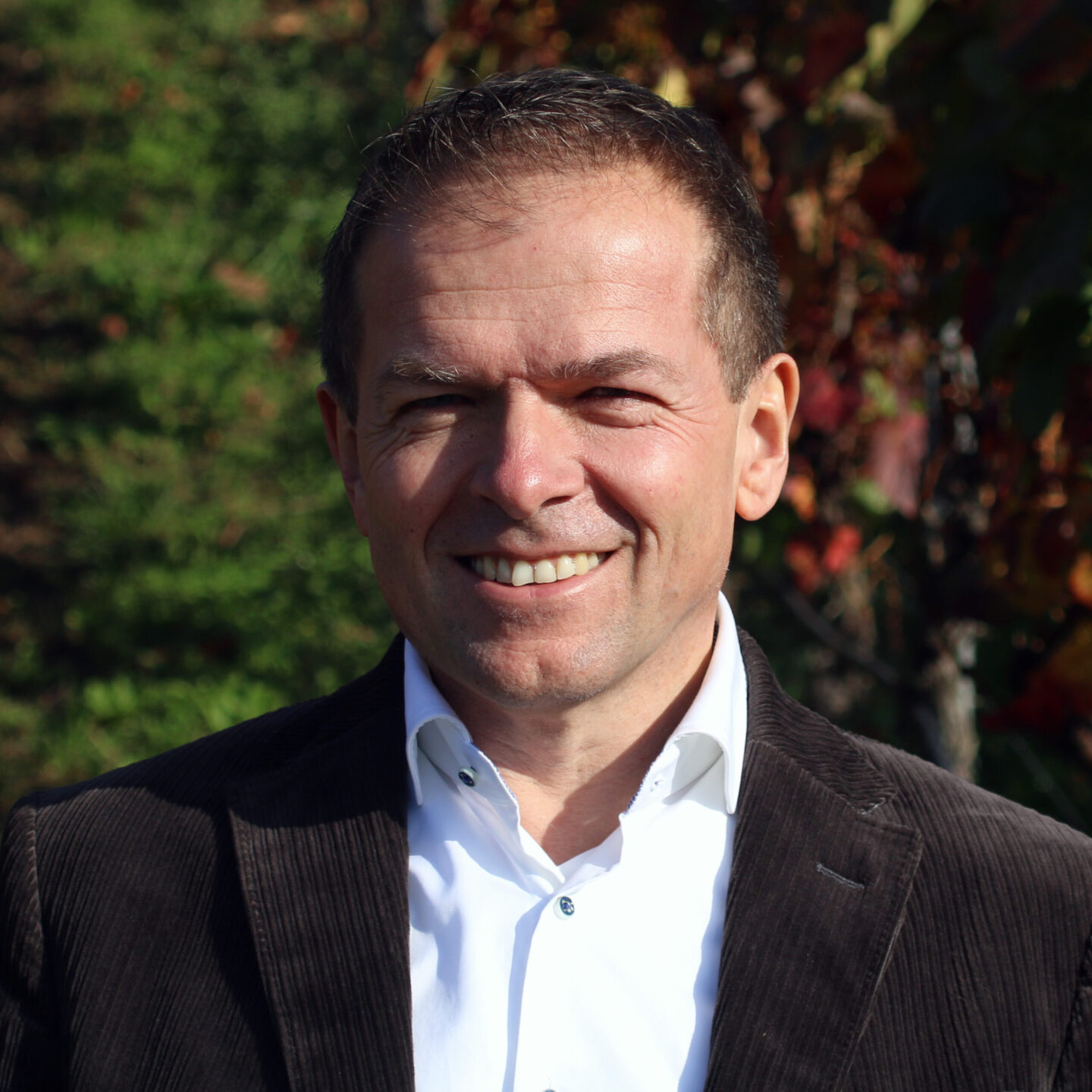
From
Frank Talmon l´Armée
CEO
of SEMODU AG
Börsen-Zeitung, 16.10.2021
Heat waves, droughts, heavy rains – the new world climate report does not paint a good picture of the future. Human activity is to blame. To limit the temperature increase, it is necessary to limit CO2 emissions. Various sectors are needed here, including the building industry. After all, buildings account for 30% of CO2 emissions in this country and are thus among the major greenhouse gas emitters.
If global warming is to be combated and climate targets achieved, the real estate sector must also play its part. Against this background, the state government in Baden-Württemberg recently decided that photovoltaic systems on house roofs should become mandatory. However, in order to use more sustainable methods in the future, the entire sector must be mass-produced and digitalized.
As it was 50 years ago
So far, however, construction sites today still look like they did 50 years ago, with iron benders, workers setting walls, concrete mixers and employees often travelling long distances. This also applies to the planning process. All buildings are virtually a prototype, as each house is designed, planned and built from scratch, usually with new teams working together all the time. On the one hand, a lot of time is wasted, and on the other hand, there is no learning process, as it is always necessary to start from the beginning.
Reconstructions due to errors account for 30 % of design work. This common approach is thus time-consuming and cost-intensive and wastes a lot of additional material and energy, which further worsens the ecological footprint. Although new technologies are being implemented sporadically, one cannot speak of a fundamental change.
A first step in the right direction is modular construction. Producing turnkey room cells and installing them on the building site means a high degree of prefabrication and thus makes it possible to approach each project with the same mathematical concept. This also applies to the individual modules. By following the same process, material is saved to a greater extent. At the same time, the highest quality is achieved. Just assembling the units on site saves time, which in turn reduces energy and costs.
The "cradle to cradle" principle
Modular construction allows for the “cradle to cradle” principle. Modules are designed from the outset so that the materials used can be easily extracted and recycled. The dogma of a sustainable concept is also to use as little material as possible and to construct buildings that can be used for different purposes or even “relocated” over time.
For example, if the environment and social requirements change, kindergartens or offices can simply be moved to a new location. Part of the method is also to use as much wood as possible in manufacturing. Not only is wood particularly well suited for construction because it is load-bearing and can absorb large tensile forces, it also has very good thermal insulation properties and stores CO2.
However, in order to make the most of the advantages of modular construction and to build as many sustainable homes as possible, serial production is needed. Similar to the regional automotive industry, projects also need to be scaled up. In such large-scale production lines, robots can also be used for even more precision and quality, as they do not have to be rebuilt each time and are not exposed to wind or weather. With the right programming, robots can independently perform standardised and repetitive tasks.
For example, machines can paint walls with much higher precision in the same colour thickness every time, just as cars are no longer painted by hand in the automotive industry. In this way, automated manufacturing plants can produce and combine large quantities of a wide variety of modules.
However, in order to make the most of the advantages of modular construction and to build as many sustainable homes as possible, serial production is needed. Similar to the regional automotive industry, projects also need to be scaled up. In such large-scale production lines, robots can also be used for even more precision. With the right programming, robots can independently perform standardized and repetitive tasks, the do not have to be rebuilt each time and are not exposed to any weather conditions.
For example, machines can paint walls with much higher precision in the same color thickness every time, just as cars are no longer painted by hand in the automotive industry. In this way, automated manufacturing plants can produce and combine large quantities of a wide variety of modules.
However, in order to derive maximum benefit from mass production, regulatory change and harmonization of regulations is needed. In the past few years, building regulations have quadrupled from 5,000 to 20,000. According to a study by the Federal Institute for Building, Urban Affairs and Spatial Research, the 16 state building regulations differ so much that the wording is completely different. This standardization of building laws is not about questioning high safety standards, but merely about ensuring that the same requirements that apply for example in Berlin are also applied in Stuttgart or even Paris and Brussels. For affordable and sustainable houses, serial production must be implemented across countries. For this, it is also necessary that instead of having to apply for a building permit for each building, these should apply to entire series. This could be supported by standardizing systems and introducing uniform industry standards. This would make it easier to connect different modules and elements such as sound insulation, fire protection or electrics would be better coordinated.
Finally, there is a need for end-to-end digitalization. A wide variety of factors must be taken into account already in the design phase. From solar radiation and ventilation to energy consumption and life cycle assessment. In the future, digital building models can serve as a digital communication platform, database for information or for documenting process steps. This facilitates sustainable planning, construction and management of buildings. This information is also relevant later for deconstruction and recycling.
“Digital building
models can be used in
future as a digital
communication platform,
database
for information or
for the documentation
of process steps“.
Optimise further and further
Together with appropriate software, machine learning and artificial intelligence, these processes can be optimised further and further. Ideally, this can create a particularly large amount of diversity in sustainable construction. For example, software could design a wide variety of original buildings that are based on the same project mathematics each time, comply with building regulations and are particularly sustainable.
SHARE ARTICLE
Sustainable Residential Real estate
Sustainable residential real estate: What are the challenges?
Our Head of Business Development Jochen Dorner gives us an insight into sustainable residential real estate:
In fact, the existing buildings pose the greater challenge compared to new buildings, as these usually contain state-of-the-art technology that at least goes in the direction of CO2 neutrality or ideally already makes this possible. Modern building technologies and the use of renewable energies make new buildings significantly more efficient than existing buildings. In contrast, existing buildings contain outdated technology that must first be upgraded or replaced in order to meet the goal of CO2 neutrality. This is difficult, high investments are necessary here, which are usually transferred by investors to the tenants. A solution is therefore needed, without increasing rents and providing affordable housing. Because rental costs are already at the limit of what is possible today and cannot continue to rise to this extent. Solutions must therefore be found and incentives created, so the costs of investments in modernization are not fully transferred to the tenant.
Featured in ZIA
Digital modules on the rise
We will bring a whole new form of housing to the market, promises Munich-based construction project developer SEMODU. The key is integrating digital products into modular construction and building prefabricated systems. The combination of the two opens up completely new living options that make everyday life easier for residents.
Imagine a young couple having a small argument about how the wall in the new apartment should look like. He wants to put a huge TV screen on it. And she wants to turn the wall into a large social media wall, displaying the latest posts from her friends. But no worries! We have a solution! Both wishes can be pleased. In the blink of an eye, the flexible living room wall becomes one part TV, one part Instagram channel, one part concrete wall, one part brick wall. The world of digitization opens up completely new scope for the design and use of one’s own four walls. Even tables can become hotplates for fresh coffee. Welcome to the living of the future!
The couple can still only be seen in the company video on the project developer’s website. But soon it could actually be like this in a German apartment. Member of the advisory board Friedhelm Schmitt claims: “Digitalization always prevails where it makes everyday life easier in the long term. SEMODU’s unique selling point is the seamless integration of digital products into the modular building concept – and thus a decisive advantage in the market.”
The Munich-based company already focuses on creating a fully digitalized apartment. The room modules are equipped in advance with the appropriate wiring, pipes, windows and doors, including wall paint and flooring, and delivered prefabricated to the construction site. There, they only need to be assembled. This efficiency and independence from weather conditions save time and money. Real estate experts have recognized what tenants want today: affordable yet comfortable living space. Not 20 apps on their phones to control lights, TV and heating – but one. Not lots of expensive furniture in the apartment. Instead: flexible furniture that’s smart. Sometimes a dining table, sometimes a cooktop, sometimes a stylish brick wall, sometimes a TV.
This approach saves resources, energy, creates the whole new affordable form of living, says Frank Talmon l’Armée, founder SEMODU. And he knows the needs even before the tenants themselves do: “In developing our digital living concepts, we are not only largely guided by the needs of our customers – much more importantly, we explore needs that are often still unknown to them themselves.” Those who now feel the desire for a smart dining table, however, will have to be patient. Currently SEMODU is founding a digital subsidiary and is in the midst of patent preparation. That is why the company, an active ZIA member, is still holding back on further details. Jochen Dorner, Head of Business Development, reveals, however, that SEMODU is integrated into a large international network for this purpose.
Potentially, almost all objects in the room can be digitized, networked – and at some point, even completely replaced, says Frank Talmon l’Armée, pointing to an already existing impressive example of this future trend: the smartphone. The smartphone has already led the way: its owners can use it to write, take photos, transfer money, glow in the dark, measure space, shop and much more. The original function has almost become a secondary matter: making phone calls.
Furniture could also go this way. For example, the aforementioned dining table or TV wall or bathroom mirror. Why do we still need countless sockets when electricity works via wireless charging? Why still various lamps, if the light can also be generated on any digital surface?
How good it is when the developer plans the smart home in an intelligent way from the start, plans the cables for all the electronics right into the building modules, and in the end gives the tenants a building operating system that controls everything centrally with a single app. It’s a kind of digital worry-free package that connects all devices with voice or gesture control.
The couple in the video quickly forgets their argument about the wall design and settles down on the sofa with their freshly brewed coffee. In case some privacy is needed, it all takes just a flick, and the floor-to-ceiling windows become opaque. Because at some point, despite all the existing technology, you just want to switch off…
SEMODU AG.
Read More: https://wir-geben-leben-raum.de/blog/digitale-module-auf-dem-vormarsch/
Joining the forces against climate change
Climate change is one of the major challenges of this century. Since it cannot be fought alone, more than 850 supporters have already decided to support the association One for the Planet, which was founded in March 2020. This includes SEMODU, a method provider for modular construction, for which sustainability plays a major role. Among all SEMODU’s environmental projects, the company highlights tree planting campaigns to harness their capacity to sequester carbon and thus counteract the greenhouse effect.
Wood also plays a central role for SEMODU – as a building material. On the one hand, it replaces the use of concrete, the production of which is very CO2-intensive. On the other hand, wood binds large quantities of the harmful greenhouse gas, and the fact that SEMODU returns the same amount of the wood used to reforestation with the help of tree planting campaigns deserves appreciation. In keeping with this sustainable approach, SEMODU develops concepts that are climate-neutral and conserve resources.
With this approach, SEMODU convinced the climate activists. “Since the resources are scarce – we meet this challenge with our sustainable concepts for the future. By creating resource-saving real estate that adapts to people’s needs and combining it with intelligent, digital solutions we strive for better future,” says Frank Talmon l’Armée founder and CEO of SEMODU AG.
Bianca Nausedat appointed head of corporate finance
SEMODU AG has brought Bianca Nausedat into the team as Head of Corporate Finance. The trained economist, who specializes in finance and entrepreneurship, will be responsible for new business areas and strategic topics. The initial focus will be on financing the expansion into the digital and modular business areas in the context of the increasingly international orientation. In addition, SEMODU also wants to drive strategic partnerships in the national and international environment.
“SEMODU is a fast-growing, innovative and dynamic company in the real estate industry. To profoundly change the housing market with sustainable, modular energy and digitalization concepts is an exciting challenge that I am very much looking forward to,” says Nausedat.
After starting her professional career as a consultant at PwC in Luxembourg and Ernst & Young in M&A, Nausedat worked for other well-known companies in the private equity and investment sector both in Germany and abroad.
About Semodu
SEMODU AG develops high-quality building modules and new methods for the control of buildings based on state-of-the-art software solutions and complex mathematical systems. Together with municipalities and partners from the fields of architecture, building technology and module production, SEMODU is thus driving the future of buildings and cities – affordable, CO2-neutral and at the same time modern and liveable. With locations in Munich, Stuttgart and Berlin, the company around CEO Frank Talmon l’Armée is active nationwide and internationally with projects in Baden-Württemberg, Berlin, Brandenburg, among others.
Alberto Rivas appointed Senior Development Manager
SEMODU Strengthens itself Further
Stuttgart, April 12, 2021 – SEMODU AG strengthens its team with Alberto Rivas (37) as Senior Development Manager. As a trained architect and real estate project developer, Rivas will be responsible for coordinating, participating in competitions as well as the acquisition and planning of new projects. In addition to national initiatives, SEMODU will also focus on driving international projects forward.
Rivas has around 20 years of professional experience and looks back on various positions at international architecture and engineering firms, where he was responsible in particular for acquisition, feasibility studies and implementation plans. Previously, he worked for ATP Frankfurt Planung GmbH for several years and most recently for Payel Rahman Architects, among others.
“I am looking forward to supporting this dynamic, innovative and fast-growing company with my expertise and setting up sustainable, digital and modular real estate projects,” says Rivas.
About SEMODU
SEMODU AG develops high-quality building modules and new methods for controlling buildings based on the state-of-the-art software solutions and the complex mathematical systems. Together with municipalities and partners from the fields of architecture, building technology and module production, SEMODU is thus driving the future of buildings and cities – affordable, CO2-neutral and at the same time modern. With locations in Munich, Stuttgart, Frankfurt and Berlin, the company headed by CEO Frank Talmon l’Armée is active throughout Germany and internationally with projects in Baden-Württemberg, Berlin, Brandenburg, Hesse and North Rhine-Westphalia, among others.
GETEC and SEMODU announce partnership
For a livable, climate-neutral future
Munich, April 22, 2021 –
GETEC and SEMODU, an innovative start-up for modular and CO2-neutral project development, have founded a joint company to implement new and pioneering energy concepts. The successful concept: green, regenerative energy solutions based on standardized room modules for long-term sustainable and resource-saving living and working.
The objective of the new joint venture is to implement an innovative and climate-neutral energy supply for the upcoming neighborhood developments and new construction projects of SEMODU and other real estate developers throughout Germany. By combining their respective core competencies, the partners also want to develop modular technology rooms that will be used in innovative modular buildings. With the help of state-of-the-art storage solutions and the “power-to-heat” principle – i.e. heat from excess electricity – fossil fuels are to be replaced in the long term, paving the way for a CO2-free heat transition.
“When looking for a new home, the average private person usually has to choose between living comfort and sustainability for financial reasons. We can no longer accept this circumstance if we want to meet the im-mense demand for living space on the one hand and the protection of our environment on the other. For this reason, we are delighted to have found in GETEC a strong partner and industry specialist that not only has the appropriate resources and expertise, but is also willing to work with us for a sustainable, livable future,” says Frank Talmon l’Armée, CEO of SEMODU AG, about the new partnership.
“Our focus is clearly on sustainable and climate-friendly real estate supply. The areas of tension between our two industries are closely interlinked and have always had a reciprocal effect on each other. It is therefore essential that we look for solutions to problems across all sectors and are prepared to tackle them together. The cooperation with a young, innovative company like SEMODU is exactly what we were looking for. We complement each other perfectly and will achieve a lot together,” says Michael Lowak, CEO of the GETEC Group’s Real Estate segment.
The first joint project: a neighborhood for age-appropriate living in the Stuttgart metropolitan region with a tailored energy and mobility concept, numerous green spaces, and using recycled concrete and high-quality wooden façade elements.
A first branding of the new joint venture is already in development and will probably be launched in the second half of the year. The cooperation partners are convinced that they will be able to create additional energy-efficient and climate-neutral living space at scale in the coming years.


About SEMODU
SEMODU AG develops high-quality building modules and new methods for controlling buildings based on state-of-the-art software solutions and complex mathematical systems. Together with municipalities and partners from the fields of architecture, building technology and module production, SEMODU is thus driving the future of buildings and cities – affordable, CO2-neutral and at the same time modern and liveable. With locations in Munich, Stuttgart, Frankfurt and Berlin, the company headed by CEO Frank Talmon l’Armée is active throughout Germany and internationally with projects in Baden-Württemberg, Berlin, Brandenburg, Hesse and North Rhine-Westphalia, among others. Further information: www.semodu.de
About GETEC
GETEC is the leading partner for industry and the real estate sector for smart, efficient and green energy solutions – in Germany and beyond. Our promise “We have the energy for more” is the guiding principle for more than 1,500 employees who use excellent engineering know-how, outstanding regulatory expertise, great speed of action and proven sustainability expertise to navigate our customers through an increasingly complex energy world while consistently reducing their carbon footprint. GETEC is active in over 40 locations in eleven countries and generated total revenues of around 700 million euros in 2019.
You can find out more about the GETEC Group at: www.getec-energyservices.com
Press Contact GETEC
Christian Faßelt
Leiter Unternehmens- und Marketingkommunikation
Tel.: 0391 – 2568392
Mail: [email protected]
Press Contact SEMODU
Philipp Nisster
Leiter UNIT.public relations
echolot pr GmbH & Co. KG
Tel.: 0711 – 9901486
Mail: [email protected]
The path to the electric revolution leads through disruption
The real estate industry needs disruptive energy, says CEO Frank Talmon l’Armée in an expert video. One giant real estate group needs to lead the way and turn the property industry around, which has barely evolved in decades. Just like Elon Musk set the automotive industry on the path of electric mobility! Such a pioneer who will be able to electrify the real estate portfolio and thus usher in the electric revolution for the property industry is necessary.
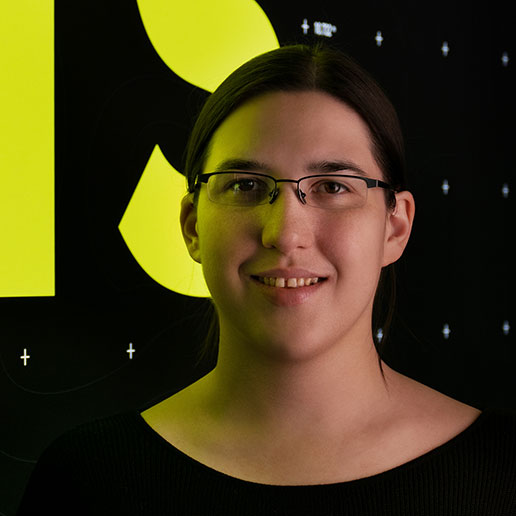
Editor
Alale Sarshar Fard
echolot public relations
+49 711 9901486
[email protected]
